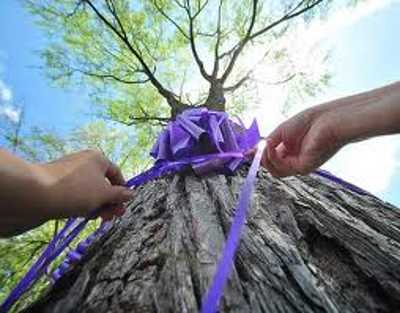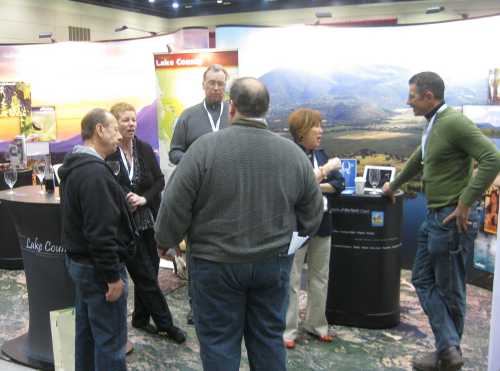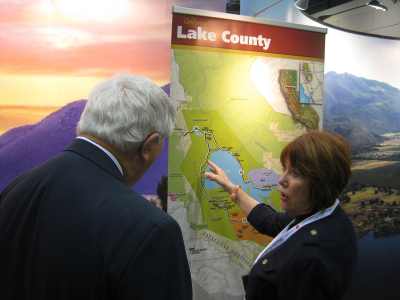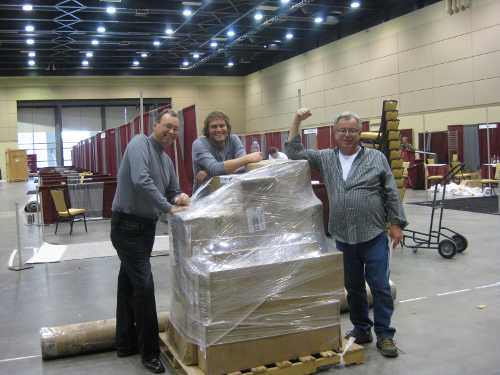- Elizabeth Larson
- Posted On
Annual 'State of the Air' report ranks Lake County at No. 8 for cleanest air in the United States
LAKE COUNTY, Calif. – Lake County has once again received top rankings in an assessment of air quality in thousands of counties nationwide.
The American Lung Association on Wednesday released its annual State of the Air 2012 Report, which grades state and local area air quality on an A through F scale by comparing local ozone and small particulate concentrations with the federal air quality standards.
Lake County received an “A” grade for ozone, a “B” grade for short term particulate pollution and
is ranked the eighth cleanest county in the nation for annual particulate average concentrations – tying with Maui County in Hawaii for the ranking.
Of California's counties, Lake was the only one in the 2012 State of the Air report to place in the top 10 cleanest counties in the country for small-particulate levels. Shasta and San Benito counties were the only other counties in California to make the top 25.
The counties that ranked in the top 10 for year-round particle pollution levels included Santa Fe County, New Mexico, No. 1; Elbert County, Colo., and Laramie County, Wyo., tying for No. 2; Hancock County, Maine, and Essex County, New York, and Jackson County, South Dakota, tying for No. 4; Billings County, North Dakota, No. 5; Maui County, Hawaii, and Lake County, Calif., No. 8; and Teton County, Wyo, No. 10.
Santa Fe, N.M., ranked as the cleanest city in the nation.
Lake's overall rankings in the report have fluctuated over the past several years. In 2011, the county was ranked No. 6 nationwide, No. 10 in 2010 and in 2009 was No. 3.
The 2012 report's findings are based on three years of data, from 2008 to 2010.
As such, the impacts of the 2008 wildfires contributed to the dip in the county's rankings, according to the Lake County Air Quality Management District.
In the summer of 2008, thousands of lightning strikes lit fires around Northern California. Winds blew smoke from the lightning fires in Mendocino County into Lake County's air basin. The county's air also was impacted by the Soda Complex lightning fires in the Mendocino National Forest.
At the same time, the 14,500-acre Walker Fire broke out near Clearlake Oaks, with that fire's cause attributed to a vehicle hitting a rock.
Even with the wildfire impacts, Wednesday's report showed that Lake is one of only nine of California's 58 counties that did not have any days of ozone air pollution levels in the unhealthful range. Small particulate only exceeded the allowable limits during the 2008 wildfires.
The other eight California counties getting “A” grades for ozone levels were Glenn, Humboldt, Marin, Mendocino, San Francisco, Santa Cruz, Siskiyou and Sonoma.
California counties receiving “A” grades for low levels of particle pollution – a mix of microscopic bits of ash, soot, diesel exhaust, chemicals, metals and aerosols – included Humboldt, Mendocino, Monterey, San Benito, Santa Cruz, Siskiyou and Sonoma.
Lake County Air Pollution Control Officer Doug Gearhart attributed the county's air quality accomplishments to strong local support – from the community at large, cooperation of local
agencies, local fire protection districts, Cal Fire, the local agricultural community and industry – for clean air measures.
That support, in turn, has made it possible for the county to comply with Federal Clean Air Standards and the more rigorous California standards for ozone and other air pollutants for the past 22 years, he said.
No other air district in California can match that record, Gearhart said.
Despite its clean air accomplishments, the American Lung Association report offered a reminder that Lake – like all counties – has special populations who are at particular risk for air pollution.
The report explained that those at greatest risk from air pollution include infants, children, older adults, anyone with lung diseases like asthma, people with heart disease or diabetes, people with low incomes and anyone who works or exercises outdoors.
Among Lake's nearly 65,000 residents, the association reported that there are 907 cases of pediatric asthma, 4,023 cases of adult asthma, 2,359 people with chronic bronchitis, 1,171 residents with emphysema, 19,103 people with cardiovascular disease and 5,491 cases with diabetes.
Children under age 18 number 13,672, there are 11,440 adults over age 65, and approximately 13,438 people live in poverty in Lake County, the report showed.
Overall, the State of the Air 2012 report showed that in America's most polluted cities air quality was at its cleanest since the organization’s annual report began 13 years ago.
“State of the Air shows that we’re making real and steady progress in cutting dangerous pollution from the air we breathe,” said Charles D. Connor, American Lung Association president and chief executive officer. “We owe this to the ongoing protection of the Clean Air Act. But despite these improvements, America’s air quality standards are woefully outdated, and unhealthy levels of air pollution still exist across the nation, putting the health of millions of Americans at stake.”
The report showed that more than 40 percent of people in the United States – or 127 million people – live in areas where air pollution continues to threaten their health.
Nearly four out of 10 people in the U.S. live in counties that received an F for air quality because of unhealthy levels of ozone air pollution, nearly 50 million Americans live in counties with too many unhealthy spikes in particle pollution levels,and nearly six million people live in areas with unhealthy year-round levels of particle pollution.
The study found that major improvements were seen in 18 of the 25 cities most polluted by ozone, including Los Angeles, which had the lowest smog levels since the report was first published in 2000.
A list of the nation’s most polluted cities follow. For more detailed air quality information, visit www.stateoftheair.org .
10 Most Ozone-Polluted
Los Angeles-Long Beach-Riverside, Calif.
Visalia-Porterville, Calif.
Bakersfield-Delano, Calif.
Fresno-Madera, Calif.
Hanford-Corcoran, Calif.
Sacramento-Arden-Arcade-Yuba City, Calif.-Nev.
San Diego-Carlsbad-San Marcos, Calif.
Houston-Baytown-Huntsville, Texas
San Luis Obispo-Paso Robles, Calif.
Merced, Calif.
10 Cities Most Polluted by Year-Round Particle Pollution
Bakersfield-Delano, Calif.
Hanford-Corcoran, Calif.
Los Angeles-Long Beach-Riverside, Calif.
Visalia-Porterville, Calif.
Fresno-Madera, Calif.
Pittsburgh-New Castle, Pa.
Phoenix-Mesa-Glendale, Ariz.
Cincinnati-Middletown-Wilmington, Ohio-Ky.-Ind.
Louisville-Jefferson County-Elizabethtown-Scottsburg, Ky.-Ind.
Philadelphia-Camden-Vineland, Pa.-N.J.-Del.-Md.
St. Louis-St. Charles-Farmington, Mo.-Ill.
10 Cities Most Polluted by Short-Term Particle Pollution
Bakersfield-Delano, Calif.
Fresno-Madera, Calif.
Hanford-Corcoran, Calif.
Los Angeles-Long Beach-Riverside, Calif.
Modesto, Calif.
Pittsburgh-New Castle, Pa.
Salt Lake City-Ogden-Clearfield, UT
Logan, UT-ID
Fairbanks, Alaska
Merced, Calif.
Email Elizabeth Larson at This email address is being protected from spambots. You need JavaScript enabled to view it. .


 How to resolve AdBlock issue?
How to resolve AdBlock issue? 










